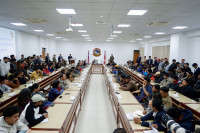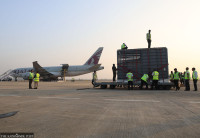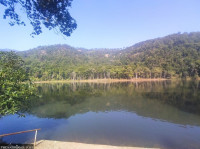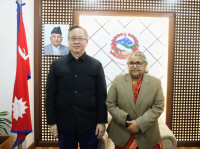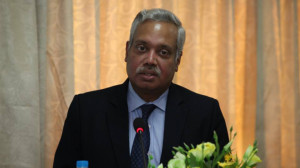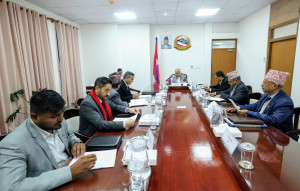National
‘Massive methane reserve’ in Dailekh fuels energy sufficiency hope
A study by Nepali and Chinese teams shows over 1.12 billion cubic metres of the gas in Bhairavi Rural Municipality. Commercial viability report due in December.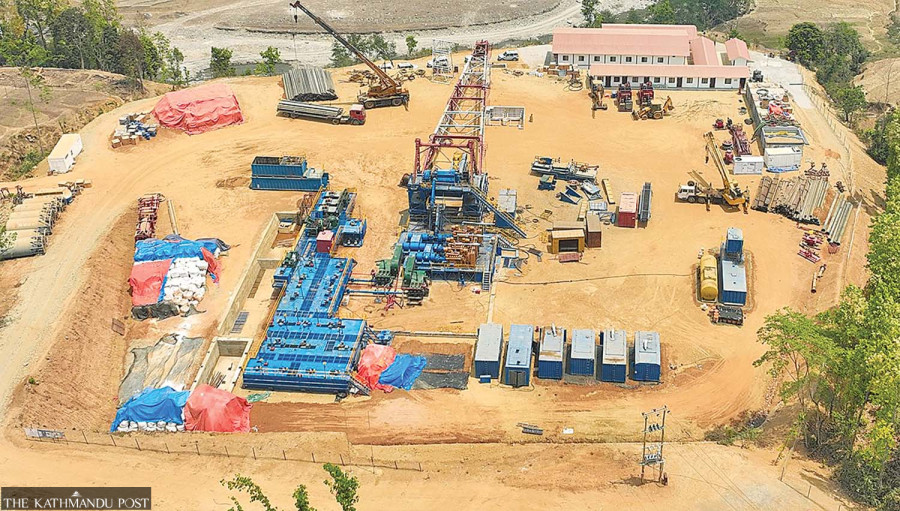
Krishna Prasad Gautam
A preliminary study has shown the presence of over 1.12 billion cubic metres of methane gas in Dailekh, a hill district of Karnali province. The discovery marks a turning point in Nepal’s quest for energy independence.
The massive reserve, discovered in Jaljale in ward 1 of Bhairavi Rural Municipality, was confirmed following detailed geological surveys and drilling conducted by China Geological Survey and CNPC Xibu Drilling Engineering Company, under the supervision of Nepal’s Department of Mines and Geology.
According to Dinesh Kumar Napit, Deputy Director General at the department, the discovery followed an extensive exploration process, including drilling down to a depth of 4,013 metres, which began in May, 2023 and continued for over a year and a half. The Chinese team collected rock samples from the site for further testing, and a final report to determine the feasibility of commercial production is expected by December this year.
“Preliminary findings are promising and point to the potential for commercial extraction. Following confirmation, both governments will need to formalise a new agreement for the next phase of development,” said Napit.
The Chinese team had collected rock samples and taken them to China for further tests on the quantity and quality of the gas. “The exploration work had begun based on the assumption of petroleum deposits. Now, a large amount of gas has been found and the team is also conducting oil testing. After that, we will know about the state of petroleum reserves as well,” said Napit. “The preliminary report has given a positive indication and now the path for commercial testing has opened,” he expressed his hope.
Based on current estimates, the volume of methane gas discovered could meet the country’s energy needs for the next 50 years, marking a potential breakthrough to end the country’s reliance on petroleum products. The exploration was part of a bilateral agreement signed between the Nepal and Chinese governments in 2016, aimed at petroleum resource development.
In 2019, the Department of Mines and Geology and China Geological Survey entered into a formal Rs2.4 billion agreement for the exploration and drilling. However, progress was delayed due to multiple factors, including the Covid pandemic, transport issues, road constraints, and land acquisition disputes.
“Had it not been for these delays, commercial production might have already begun,” said Mukunda Bhattarai, information officer at the department. According to him, the agreement was signed in February, 2019 for three years and the project’s deadline was extended in 2022.
Drilling was carried out over 45 ropani (2.29 hectares) of acquired land in Jaljale by a team of around 70 technicians, with jobs provided to approximately 100 local workers. According to Bhattarai, seismic, geological, magnetotelluric and geochemical sampling surveys were conducted in the first phase while drilling was carried out in the second phase for the exploration.
The local people in Karnali are excited about the find and its potential to bring development to the region. “The discovery has raised hopes for substantial economic transformation, particularly in Karnali, the country’s least developed province. Commercial production would significantly reduce Nepal’s fuel import burden, saving foreign currency and generating national revenue,” said Padam Bahadur Shah, Karnali chairman of the Federation of Nepalese Chambers of Commerce and Industry. He said the development could create lots of local jobs and accelerate the region’s infrastructure growth.
Methane (CH4), composed of hydrogen and carbon, is considered a cleaner fuel compared to petrol or diesel. Chemist Vijay Sharma emphasised its potential as an alternative energy source. “Methane can be used to power vehicles, generate electricity and for domestic lighting,” said Sharma. “Hydrogen can also be extracted from methane to produce ammonia, a key component in fertilizers.”
According to the Department of Geology and Mines, drilling has been conducted in three areas of Dailekh—Shirshthan, Nabhisthan and Paduka—within a radius of around three kilometres. Preliminary data suggests there could be a lot of reserves.
“We have identified at least three likely petroleum-rich zones in Dailekh. More exploration in these areas could significantly increase the volume of estimated reserves,” said Napit.
The department is now preparing for the third phase, which will include test production, but this requires a new agreement with the Chinese government. For now, two Chinese technicians remain stationed in Jaljale, while Nepal Armed Police Force has been deployed to secure the exploration site.
“All field activities under the current agreement have been completed. We are waiting for the final Chinese report by December, after which we will begin project design for test production,” said Napit.
Methane is a greenhouse gas, formed primarily from the decomposition of organic matter over long periods. Methane is used globally as an energy source for heating, electricity generation and industrial uses. Unlike liquefied petroleum gas (LPG), it cannot be compressed easily into small household cylinders and is usually stored in large containers.
Nepal embarked on petroleum exploration in the late 1990s. Since then a number of foreign companies have expressed interest in conducting studies and were subsequently given exploration permits.
However, citing the slow work of foreign companies that received licences from the department, the government cancelled all the licences three years ago.
Texana Resources Company and BBB Champion of the US, Cairn Energy PLC of the UK and Emirates Associated Business Group (EABG) of the UAE were among the companies that lost their working licences.
Nepal is entirely dependent on petroleum imports. Fossil fuels make up the highest share of imports, worth over Rs305 billion in the previous fiscal year.




 6.12°C Kathmandu
6.12°C Kathmandu
